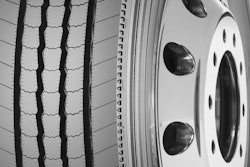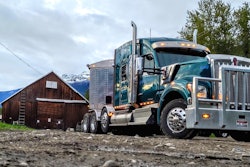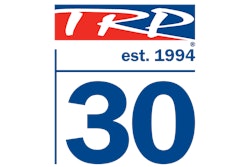
Responding to a customer’s needs in a timely manner is vital to any parts or service operation. Customer service is the differentiator that turns a one-time sale into a long-term business relationship.
But how do you provide excellent customer service when a customer requests something you don’t have? How do you react quickly, intelligently and correctly to turn a challenging request into a great sale and a showcase of your customer service excellence?
It starts with listening.
“It’s about knowing your customer and being able to have a true conversation with them,” says Jeremy Oistad, TEPS manager at Butler Machinery Company.
When customers are looking for a part or repair you haven’t seen, it’s natural to want to spring into action immediately. Being in the parts business is “built on getting the end user what they need” promptly, says another distributor.
[RELATED: KEA offers three steps to right-size your parts inventory]
But jumping into problem-solving mode before you know exactly what you need to do also can lead to missteps.
“You don’t want to go after something that isn’t truly what the customer is looking for, then you find it and it doesn’t work, because then you’re back to square one,” Oistad says.
“We try not to say no, that’s where it starts for us,” adds Greg Arscott, president at The Pete Store. “But that means we have to know what we’re looking for. Customers come to us to solve their problems, not for us to make more for them.”
Once a customer’s need is fully understood, developed business practices should engage.
Procuring hard to find parts
At Fort Garry Industries (FGI), President Robyn Spitkze says parts “not in stock” can mean several different things. A stocked item being temporarily sold out, or only available at another location activates a different action plan than an item the company doesn’t have in stock and doesn’t have confirmed supply source for.
“All these scenarios have a different path depending upon the customer’s timeline for requiring the part, whether they will accept and alternate, and whether the request is supplier-specific,” Spitzke says.
What’s most important with these procedures isn’t who is called first so much as ensuring the procedures are well established throughout a business.
FGI prefers to source first from a primary supplier before looking into alternate sources, Spitzke says. Arscott says The Pete Store checks its network stock before expanding its search to Paccar PDCs, vendors and other options.
At Butler’s 20 stores, Oistad says location influences his team’s first actions.
[RELATED: Point. Counterpoint. Where trucking stands on the REPAIR Act]
“Some of our stores are in larger towns where there are dealers and other competitors nearby. We have the ability to lean on them a bit,” he says. “We also have stores in small 2,500 people population areas where there might not be a dealer close by. There we have to act differently.”
With locations in Kentucky’s two largest cities, LASCO Heavy Duty also starts its search locally before expanding to vendors and third parties, says President David Washbish.
Yet even established sourcing methods sometimes come up empty. Abandoning a search after exhausting regular channels won’t win you any customer service trophies. Once you’ve committed to finding a customer’s part, you should do everything you can to follow through.
“Every day we are thinking outside the box by using non-traditional approaches and a ‘by any means necessary’ mindset to meet the customers demand and get their truck back on the road,” says Jeff Weaver, vice president of parts at Truckworx Kenworth.
Adds Rudy Niswanger, CEO at Joe Gear Companies, “Our parts professionals are continuously growing their network of companies and connections that can be relied on to provide us with the right part in an acceptable time frame. Our customers are losing a lot of money each day their truck is not on the road, so if we can find a vendor that can get us a high-quality part even one day quicker, that can make a huge difference in that customer’s bottom line.”
[RELATED: It’s time to nominate businesses for the 2024 Distributor of the Year Award]
Customers expect transparency throughout the sourcing process as well. Rarely will a parts hunt reach an immediate resolution. When choices must be made, customers should be consulted.
“Communication with the customer is critical as the situation can become fluid,” adds Spitzke. “If the item they requested is unavailable or unavailable on a timely basis, the customer needs to be included in the decision of other options available to them.”
And it’s also important to remember speed isn’t the only factor in a customer’s purchasing decision. A locally sourced aftermarket part might not appease a customer who only buys OE genuine replacement parts, presuming the latter can also be procured a timely manner.
Washbish says LASCO tracks pricing and shipping timelines when sourcing parts and presents both to customers. Arscott says The Pete Store updates customers throughout in its search process so efforts are focused on tracking down parts the customer will accept.
“If you know your customers, you should know what product is more likely to work for them,” adds Oistad.
It’s a good idea to record how parts requests are resolved too, both as a method of developing best practices and to track which components require the most wild goose chases. If the same product requires several individual sourcing events, it may be time to put it on the shelf.
[RELATED: Suppliers give 'real world view' of supply chain entering 2024]
“When we buy an item from another source, we historically track the sales history under the normally stocked item to try and ensure we understand the demand for that item and forecast inventory appropriately,” says Spitzke.
Adds Weaver, “We have a team dedicated to maintaining inventory levels across the company. We utilize different programs to help forecast/project our inventory needs, whether that is seasonal, cyclical, new markets, customer requests or increased demand … As demand for a particular part increases, quantity on hand automatically increases.”
Challenging service requests
Unusual requests are more challenging in service bays — but that doesn’t mean they should be overlooked or avoided.
Diagnosing trucks on arrival is one tried-and-true way to ensure technicians aren’t assigned to work they can’t complete.
Across The Pete Store network, each service facility features at least one Triage Quick Repair (TQR) bay where the location’s most experienced and capable technicians are tasked with diagnosing trucks on arrival. Arscott says TQR is vital for the dealership group because it ensures when a truck reaches a bay it will be met by a qualified technician.
“If the smartest person in the shop gets their hands on the truck first, we can be confident in what’s wrong with it before its assigned to a tech,” he says. “You don’t want a technician to start a repair and not be able to finish it, but if TQR works on arrival, that shouldn’t happen.”
Consistent training pathways throughout your shop also can reduce instances when a repair is beyond a technician’s skill set.
[RELATED: Truckworx names Kenworth's 2023 Dealer of the Year]
Vice President of Service Richard Williamson says Truckworx assigns a training path to each new technician when hired. The training is monitored monthly, reviewed by local and corporate management and then adjusted as new products enter the market to ensure the workforce can tackle any customer challenge.
And in those rare occasions where a repair really is one of a kind, you shouldn’t hesitate to find an expert — no matter where they are found.
Washbish says LASCO sometimes calls other shops for tips if a repair is challenging, and outsources some engine work to other shops because their expertise exceeds his team. Those same experts reciprocate on the jobs where LASCO is more experienced.
Niswanger does the same.
“I have found most people are willing to help if you just ask. There are more folks that are willing to share knowledge than those that view knowledge as a limited resource and want to keep it all for themselves. I am always amazed by people’s generosity with answering questions if you simply just ask,” he says.
[RELATED: Are your finances aligned? Check out our upcoming FET webinar about how to avoid tax liabilities]
Niswanger also notes that once a repair is started, it’s imperative to not overlook the importance of internal education and external communication to ensure the best customer experience. Because what is most important is ultimately about getting the customer back on the road, he says.
“We pride ourselves on providing custom solutions for whatever the need and we don’t like to say no. We will immediately go to work to study on what we don’t know and create a plan to gain the knowledge, skills, and/or tools and equipment in order to help that customer,” he says. “However, there are some things we are not good at yet and feel it is our duty to tell the customer if there is a better option for them currently. And if we see enough need for that request we will build the capabilities to provide that service in the future.”
At Truckworx, Williamson says his team occasionally sends a technician from one location to another to complete exceedingly difficult jobs, and also is open to sub-contracting out to a capable vendor.
And don’t overlook your manufacturers. The people who developed a component or system should know how to fix it. That’s how Truckworx recently expanded its transmission service offering, Williamson says.
“In the past, we always subbed out Allison transmission work to the local Allison distributor,” he says. “About a year ago, we contacted Allison and asked if training was available to allow Truckworx to perform work on Allison transmissions. We learned there was training available and, so far, we have been able to get four of our locations certified to perform external repairs, with a goal of eventually getting all locations certified to work on Allison transmissions.”
[RELATED: Nominate a truck dealer for our 2024 Successful Dealer Award!]
Thompson Truck & Trailer likes manufacturer training too, says Matt Burton, general manager, and couples that with its own programs to create the most robust education program for its tech workforce.
“We prioritize our manufacture training programs as well as our internal Thompson training program to equip our locations with technicians at each location,” he says. “Our training encompasses a combination of classroom instruction, hands on experience and continuous professional development initiatives. We have a culture of knowledge sharing and collaboration among our teams allowing cross pollination of expertise and the latest technology and trends.”
And just like finding a part, no matter how a repair is ultimately completed, the process should be transparently communicated to the customer. No one wants to be left in the dark.
“Communication in a lot of ways is the most important thing we do,” says Arscott. “Obviously we have to fix trucks, but what we uncover during a service event has such a huge impact on our customers’ businesses … Knowing at the earliest possible moment what is going on and communicating that to [customers] the way they want to receive that information is so important.”









